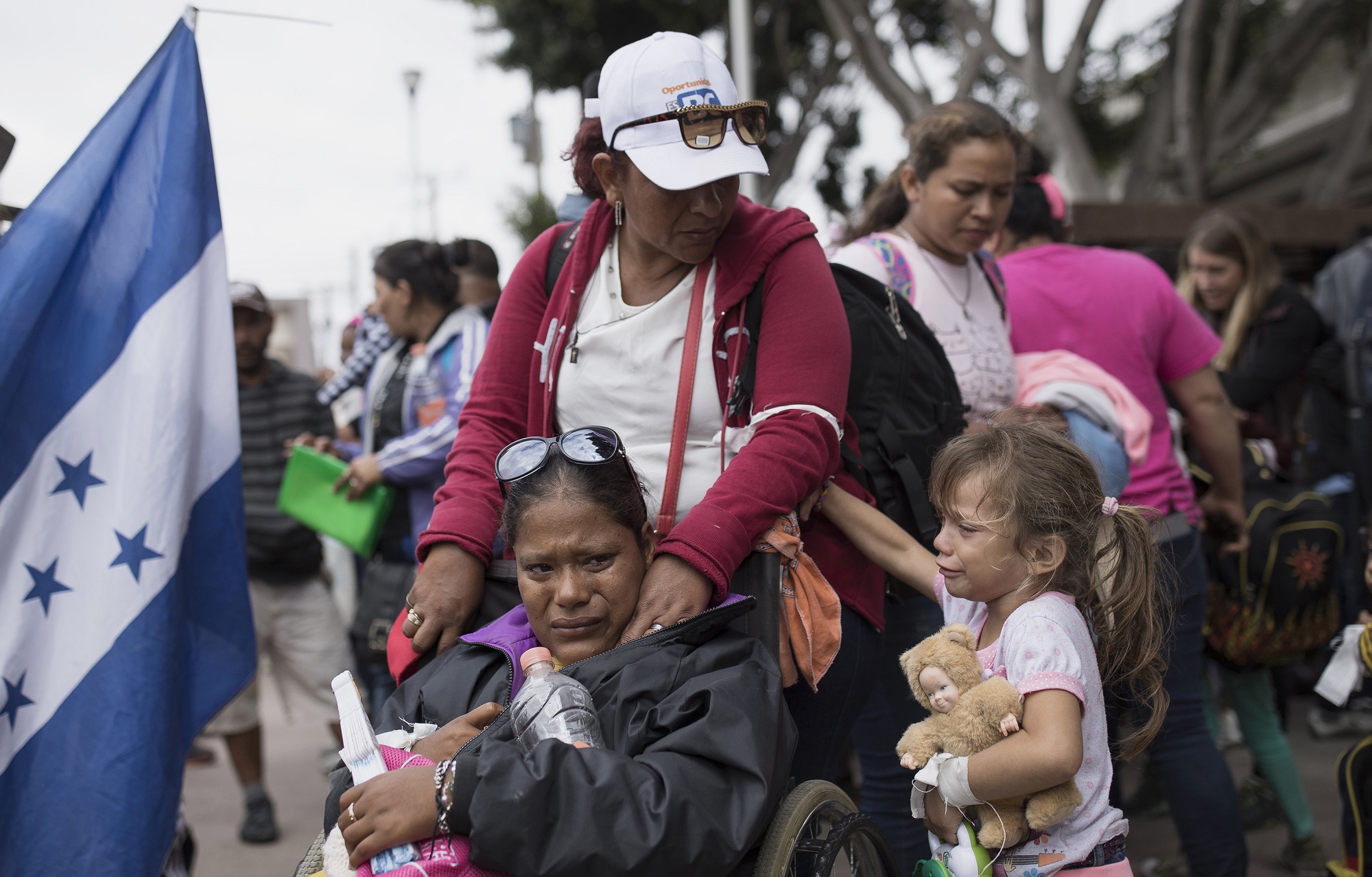
Central Americans who traveled in a caravan through Mexico to the border with San Diego began turning themselves to U.S. authorities to seek asylum Monday in a direct challenge to the Trump administration. Nearly 200 migrants, many traveling with children, decided to apply for protection at the nation’s busiest border crossing after many fled violence in their home countries, organizers said.
Wendi Yaneri Garcia says she’s confident she will be released while her asylum case winds its way through the courts because she’s traveling alone with her 2-year-old son, who has been sick.
“All I want is a place where I can work and raise my son,” the 36-year-old said.
She said police in her hometown of Atlantida, Honduras, jailed her for protesting construction of a hydroelectric plant and that she received death threats after being released. President Donald Trump and members of his Cabinet have been tracking the caravan of migrants, calling it a threat to the U.S. since it started March 25 in the Mexican city of Tapachula, near the Guatemala border.
Attorney General Jeff Sessions has called the caravan “a deliberate attempt to undermine our laws and overwhelm our system,” pledging to send more immigration judges to the border to resolve cases if necessary. Trump administration officials have railed against what they call America’s “catch and release” policies that allow people requesting asylum to be released from custody into the U.S. while their claims make their way through the courts, a process that can last a year.
The caravan’s arrival at San Diego’s San Ysidro border crossing marked the end of a month-long journey by foot, freight train and bus for the migrants, many of whom said they feared for their lives in their home countries. Nefi Hernandez, 24, said a gang in his hometown of San Pedro Sula, Honduras, threatened to kill him and his family if he did not sell drugs. He intended to seek asylum with his wife and baby daughter, who was born on the journey through Mexico. Jose Cazares, 31, said he faced death threats in the Honduran city of Yoro because a gang member suspected of killing the mother of his children learned one of his sons reported the crime to police. But the travelers faced an uncertain future as they asked for asylum. U.S. immigration lawyers warned them that they face possible separation from their children and detention for many months.



